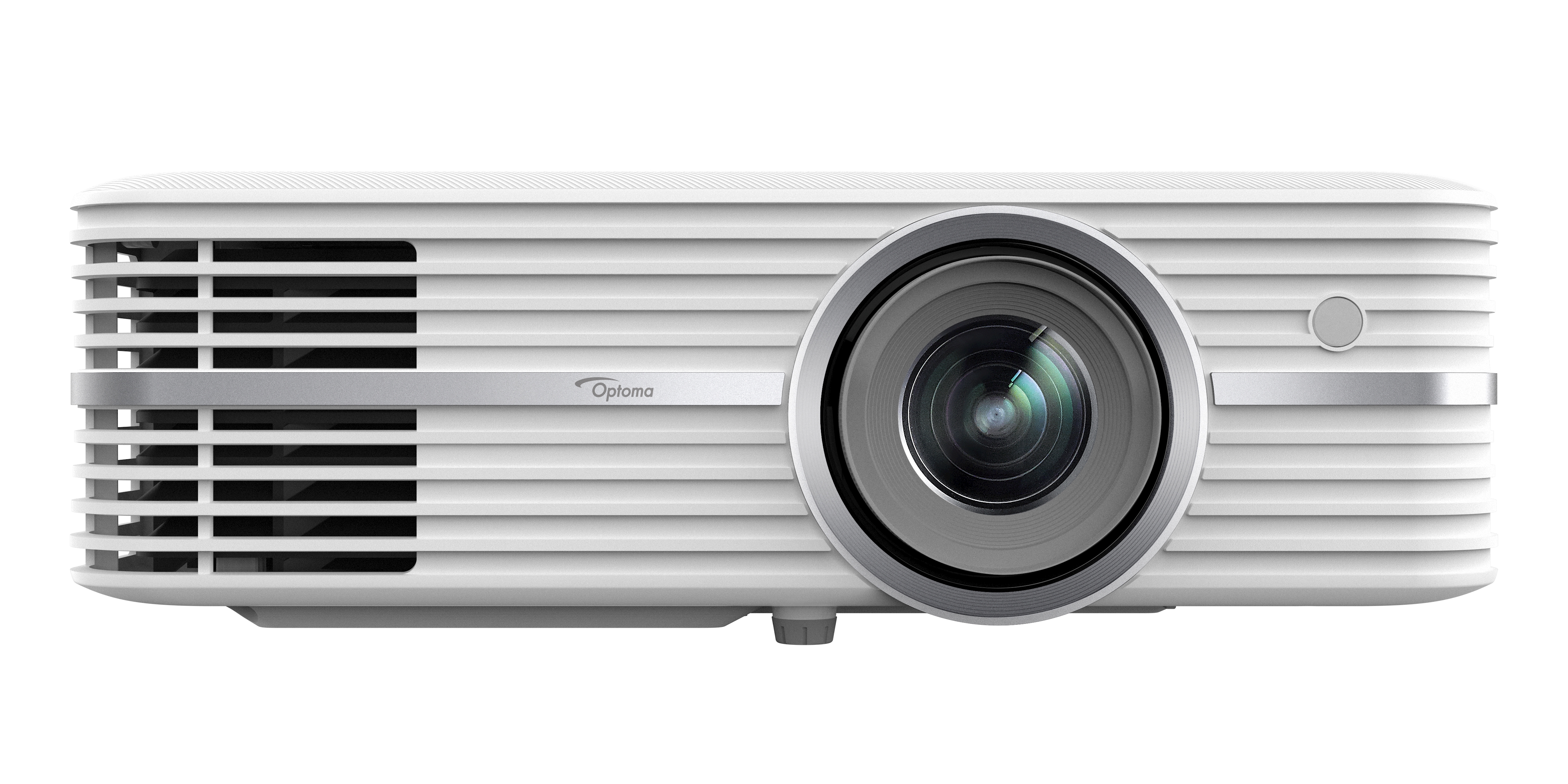TechRadar Verdict
The Optoma UHD52ALV tries to drag projectors kicking and screaming into the smart age. While its only fair-to-middling black levels and some problems handling the brightest HDR picture elements stop us from giving the Optoma UHD52ALV an unbridled recommendation, it’s one of the most practical and friendly living room projectors we’ve seen to date.
Pros
- +
Good value
- +
Voice control is handy
- +
Bright, contrast-rich images
- +
Decent 4K clarity
Cons
- -
Black levels merely average
- -
Peak HDR color issues
- -
Audio glitches
- -
Gaming lag
Why you can trust TechRadar
However much we might like the way projectors give us huge pictures for far less money than similarly massive TVs, there’s no denying that they’re starting to look a bit dumb. By which we mean that while TVs are offering more ‘smart’ features, projectors for the most part still just sit there beaming out light.
The Optoma UHD52ALV, though, joins the recently reviewed LG HU85LA CineBeam in finally starting to give projectors some sort of brain power.
It doesn’t go as far as the LG - there’s no built-in support for online streaming apps, for instance - but it does offer voice control, phone mirroring and both streamed and USB drive multimedia playback. And at $1,799 (£1,500, around AU$3,100) it also happens to be well over £3,000 cheaper than the LG HU85LA.
The Optoma UHD52ALV rounds out its unusually domesticated charms by claiming to be bright enough to be watchable in a normal living room rather than a blacked out home theater.
Design
4K: Yes | HDR: Yes (HDR10, HLG) | Projector technology: DLP with UHP lighting | Dimensions: 392 x 118 x 281mm | 3D: Yes | Inputs: Two HDMIs (both v2.0), four USBs (one service, one reader, one for wireless dongle, one for Alexa and (in the UK) Google Assistant Dongle), RS232, Ethernet port, D-Sub PC port, 12V trigger, 3.5mm audio output, optical digital audio output, powered USB output
The Optoma UHD52ALV doesn’t do anything radically new with its design, but is still a pleasant enough addition to a living room.
For starters, it’s pretty small for a projector that claims a maximum light output as high as 3500 lumens. It’s also at pains to round off any potential sharp corners or edges, and its gleaming white finish is both pleasant in its own right and neutral enough not to clash with your decor.
To that end, even the control buttons on the top edge are more stylish than most, while the decision to use a black lens ring provides an attractive contrast to all the white elsewhere.
Sign up for breaking news, reviews, opinion, top tech deals, and more.
An opening in the projector’s top edge lets you get at both zoom and vertical image shift adjustments, the latter of which is nice to find on such a relatively affordable projector.
Too bad the remote control is so small and slim it can easily disappear between cushions in a darkened room. Provided you can find it, though, its sensibly limited button count and cute backlighting make it straightforward to use.
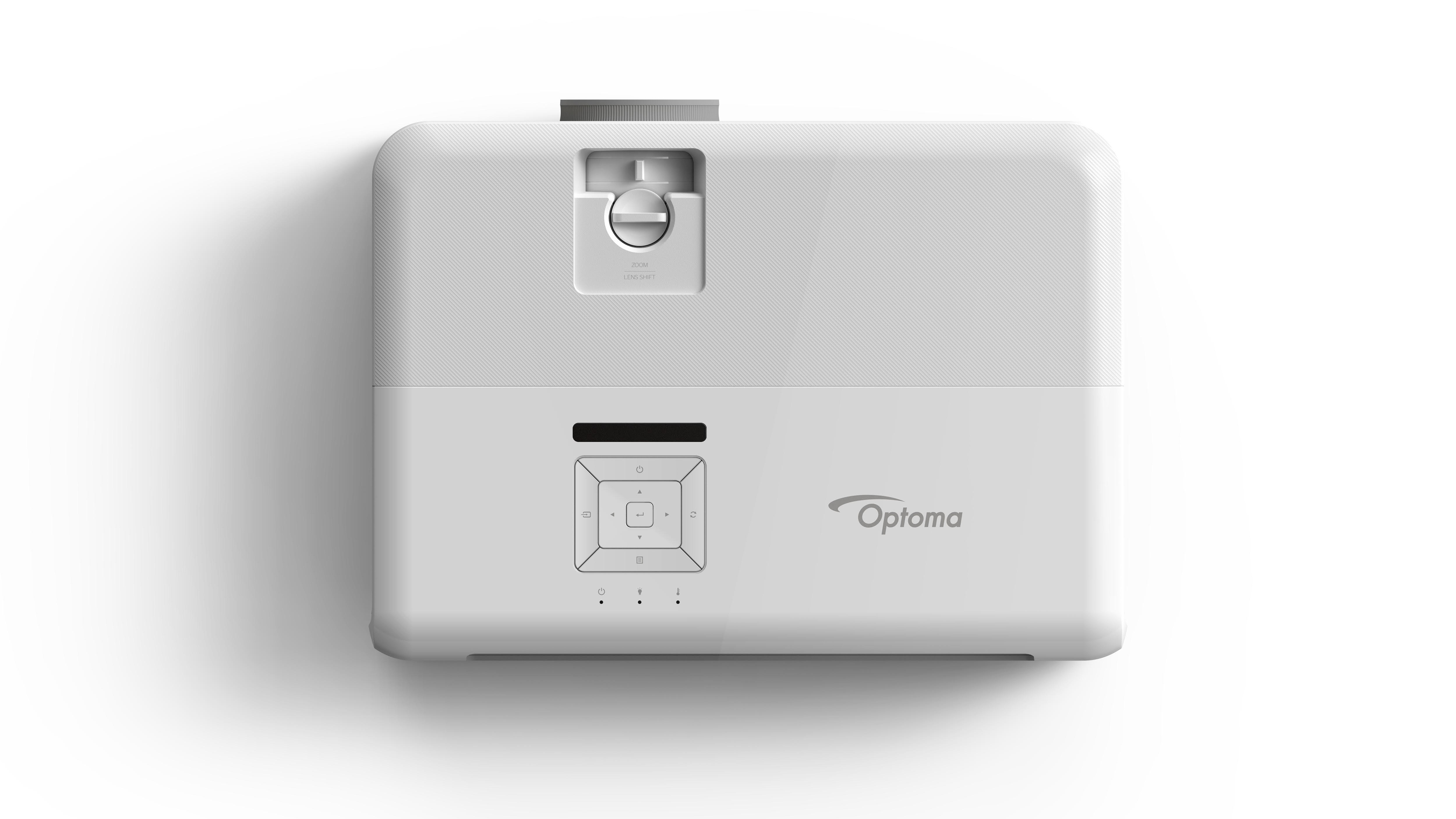
Setup and features
The Optoma UHD52ALV is very easy to get up and running. Its 1.3x zoom and vertical image shifting tools will make it easy for most users to fit its images on their screens without needing to fall back on any image-distorting keystone adjustments. Its focus ring is nicely calibrated too.
There are complications elsewhere, though. For starters, setting up the projector so that you can control it with your voice is a little fiddly: You first have to put the provided USB wireless dongle into the right USB port, and then set up your Alexa or Google Home system with Optoma’s projector ‘skills’. Note, too, that you need an external Amazon Alexa or Google Home listening device, such as an Echo, for voice control to work. At the time of writing, Google Home only works in the UK.
The projector’s picture settings aren’t entirely straightforward, either. Among the most useful adjustments are: a host of picture presets for both high dynamic and standard dynamic range sources; a selection of different lamp output modes; adjustments for the Gamma and white balance; and Optoma’s PureMotion processing to reduce judder. The PureMotion processor also works better than most such systems when it comes to reducing judder with 24 frames a second movies. But you don’t really need it, as the projector’s innate motion handling is very good.
We’d recommend using either the Film or HDR presets for dark room viewing of HDR content, and Bright for viewing in ambient light. For SDR content, use either the Cinema preset for dark room viewing, or the HDR Sim mode for bright room viewing. This latter setting actually turns SDR into something approximating HDR, and it works remarkably well considering that projectors aren’t by their nature typically great at handling HDR’s image demands.
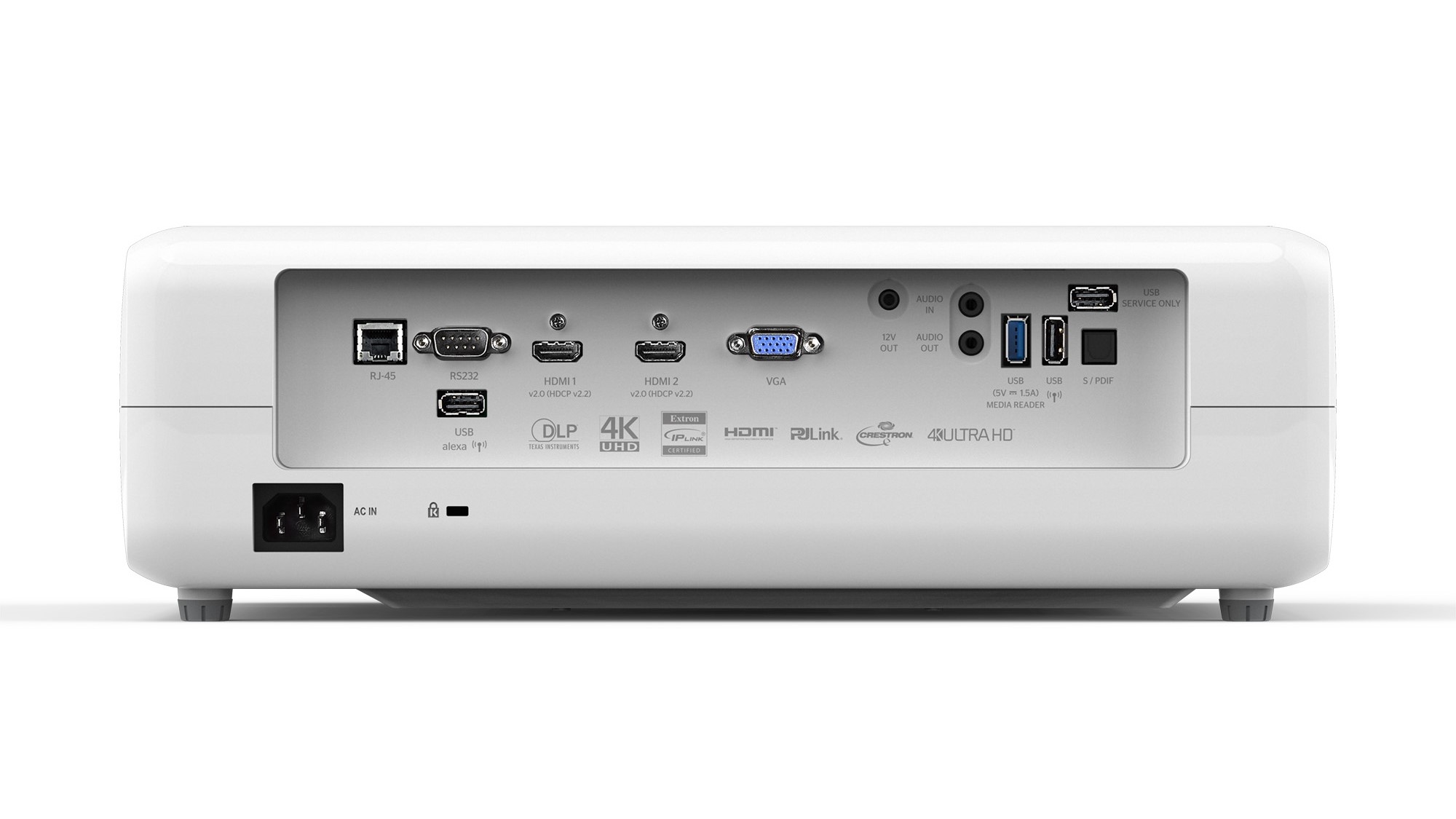
Once you’ve got the voice control set up, it only offers fairly basic controls. Switching on the projector, changing inputs, adjusting the volume and so on. But it’s still handy if you’ve lost the small remote control - and its limitations are more a function of the relative simplicity of projectors as devices rather than any unhelpful limitation in the voice control implementation.
Stick another USB dongle into the Optoma UHD52ALV’s standard Wi-Fi USB port enables network file streaming support. Note, though, that Optoma only provides one dongle for free. There’s also a further USB port with a power output (so you can attach a powered HDMI dongle such as an Amazon Fire TV stick), or through which you can play most video, movie and music file types.
The expansive connectivity also includes two HDMIs capable of 4K and HDR playback, a PC port, and multimedia playback via Wi-Fi or smart device screen mirroring (using the TapCast app).
It’s good to see the UHD52ALV supporting the HLG format favoured for live HDR streams as well as the industry standard HDR10 HDR format. And while 3D might have vanished from the TV world, it’s still supported by this projector. Bear in mind, though, that you’ll need to cough up extra for compatible 3D glasses, as none are included for free. There’s no point looking for any of Optoma’s own glasses, either, as the brand no longer makes them - however plenty of compatible third party models are out there, though...
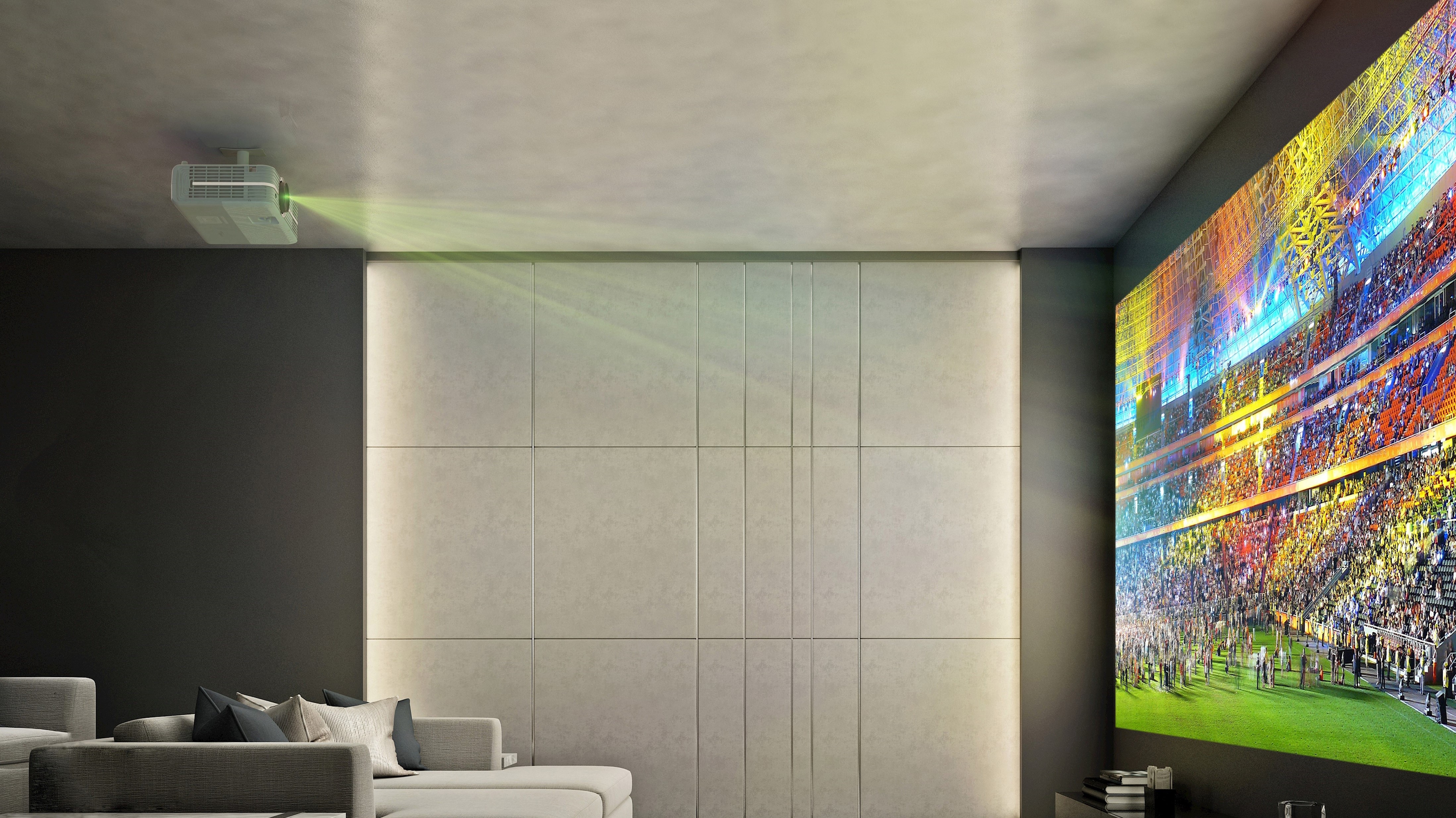
Performance
Happily the Optoma UHD52ALV’s smarts extend to its performance. The first thing that hits you - almost literally - is how bright it is. It punches out bright scenes with an intensity that actually makes its claims of 3500 lumens of peak brightness look conservative. There’s easily enough light here to keep the pictures watchable in all but the most sun-drenched living rooms - especially if you partner the projector with a mild positive-gain screen.
The UHD52ALV doesn’t just rely on brightness for its thrills, though. Crucially, despite not carrying a wide color filter like a few (more expensive) projectors do these days, its colors are well saturated and vibrant enough to keep the high brightness company. This means colors avoid the wan, faded look you sometimes get with brightness-dominated pictures. As well as holding up better in ambient light than most projector colors do.
Talking of contrast, first impressions of the Optoma UHD52ALV suggest that it holds on to better black colors than you usually see with ultra bright projectors. Again, ambient light inevitably ‘waters down’ black colors with any projector that’s trying to work in a bright room. But here a combination of decent native black levels and the optical illusion of better blacks created by the projector’s high brightness combine to keep dark areas looking more convincing in ambient light than they usually would.
The UHD52ALV’s impressive brightness and color don’t just help it combat ambient light, though. They also make it more adept with high dynamic range content than most projectors are. Even some HDR-capable models that cost substantially more can’t produce as clear a difference between SDR and HDR playback as this Optoma model.
However, what really sets it apart from most bright-room peers is how well it adapts to dark rooms for more serious movie nights. Shifting from the Bright or HDR Sim presets recommended for HDR and SDR bright room content respectively to the Cinema or Standard presets is all you have to do to introduce the reduced brightness, extra contrast, enhanced black levels and more restrained colours required for an engaging dark room projector picture. During dark room viewing you also notice such unexpected (for an affordable bright room projector) tricks as impressive amounts of shadow detail in dark scenes, a confident combination of bold and subtle color tones, and good levels of sharpness and clarity.
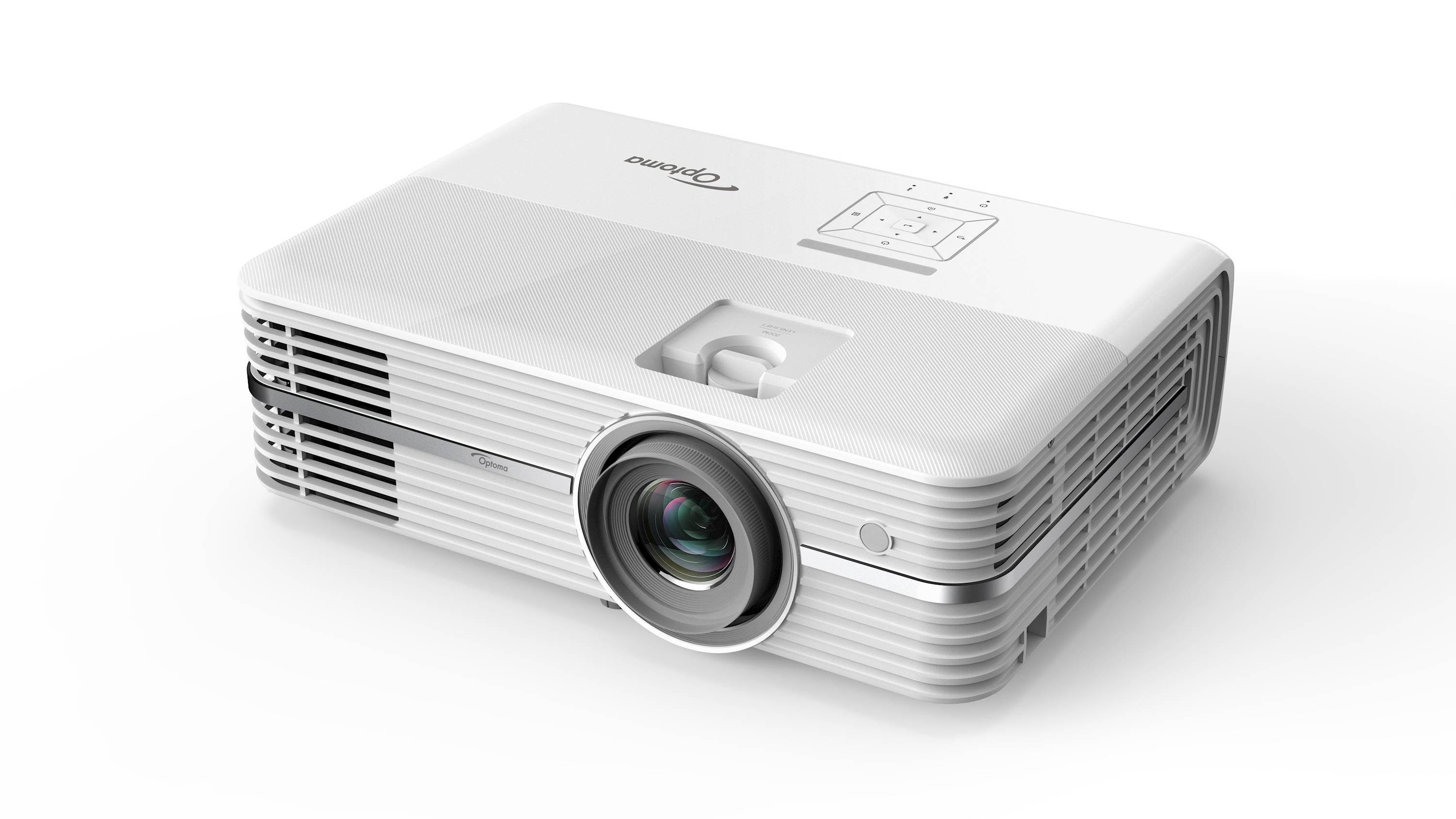
While the Optoma UHD52ALV isn’t a native 4K projector, Texas Instruments' approach to getting 4K-like performance out of DLP projectors that don’t have 3840x2160 true pixels definitely generates here a picture that looks, at least, much sharper and more detailed than normal HD.
At this point the Optoma UHD52ALV is starting to sound too good to be true. So inevitably, there are a few flaws to report, too. The most frustrating of these is the way the projector struggles to resolve some of the boldest, richest HDR colors. Such parts of the picture can seem to glow with a kind of radioactive intensity, standing out unnaturally from the rest of the picture and losing subtle tonal details. Luckily it’s only with the most extreme HDR colors where this happens. But you certainly can’t ignore it when it does crop up.
While the UHD52ALV’s brightness helps to sell its black level performance with mixed bright and dark shots, during dark room viewing there’s definite low-contrast greyness hanging over more predominantly dark images. I’ve certainly seen much worse black levels from projectors aimed at the living room market, but really serious cinephiles might be better looking at a more dedicated home theater projector, designed expressly for dark room use.
The mostly very good 3D pictures are marred by a slightly blurry look to motion at times (and you can’t use the PureMotion processor with 3D). Finally in the negative column, the Gaming mode strangely only delivered a disappointingly high delay in producing pictures of 84ms.
Sound
You can enjoy video and music files without needing to find an external audio solution, thanks to the UHD52ALV’s built-in 2x5W audio system, however the Optoma UHD52ALV’s sound quality fails to do its punchy pictures justice. There’s not enough power to project the sound far enough from the projector’s bodywork to make it sound like it’s married to the pictures. Also, with our sample the speakers distractingly kept briefly turning off during very quiet moments - which was, as you can imagine, a definite red flag.
Final verdict
The Optoma UHD52ALV isn’t perfect. Its black levels can’t get quite deep enough to keep serious home cinema fans happy, it struggles to keep a grip on very bright HDR, its imaging lag is a bit high for gamers, and its built-in speakers should only be seen as a sound option of last resort.
The projector does, though, deliver a strikingly effective bright room performance. It also looks more convincing with HDR than most projectors for most of the time, despite its issues with the very brightest HDR elements.
Its pictures are also sharp, vibrant and clean. And while it may not be on a par in dark rooms with good, dedicated home cinema projectors, it’s still more versatile in adapting to different room conditions than most of its rivals.
- Looking for other options? Check out our list of the best projectors

John has been writing about home entertainment technology for more than two decades - an especially impressive feat considering he still claims to only be 35 years old (yeah, right). In that time he’s reviewed hundreds if not thousands of TVs, projectors and speakers, and spent frankly far too long sitting by himself in a dark room.
